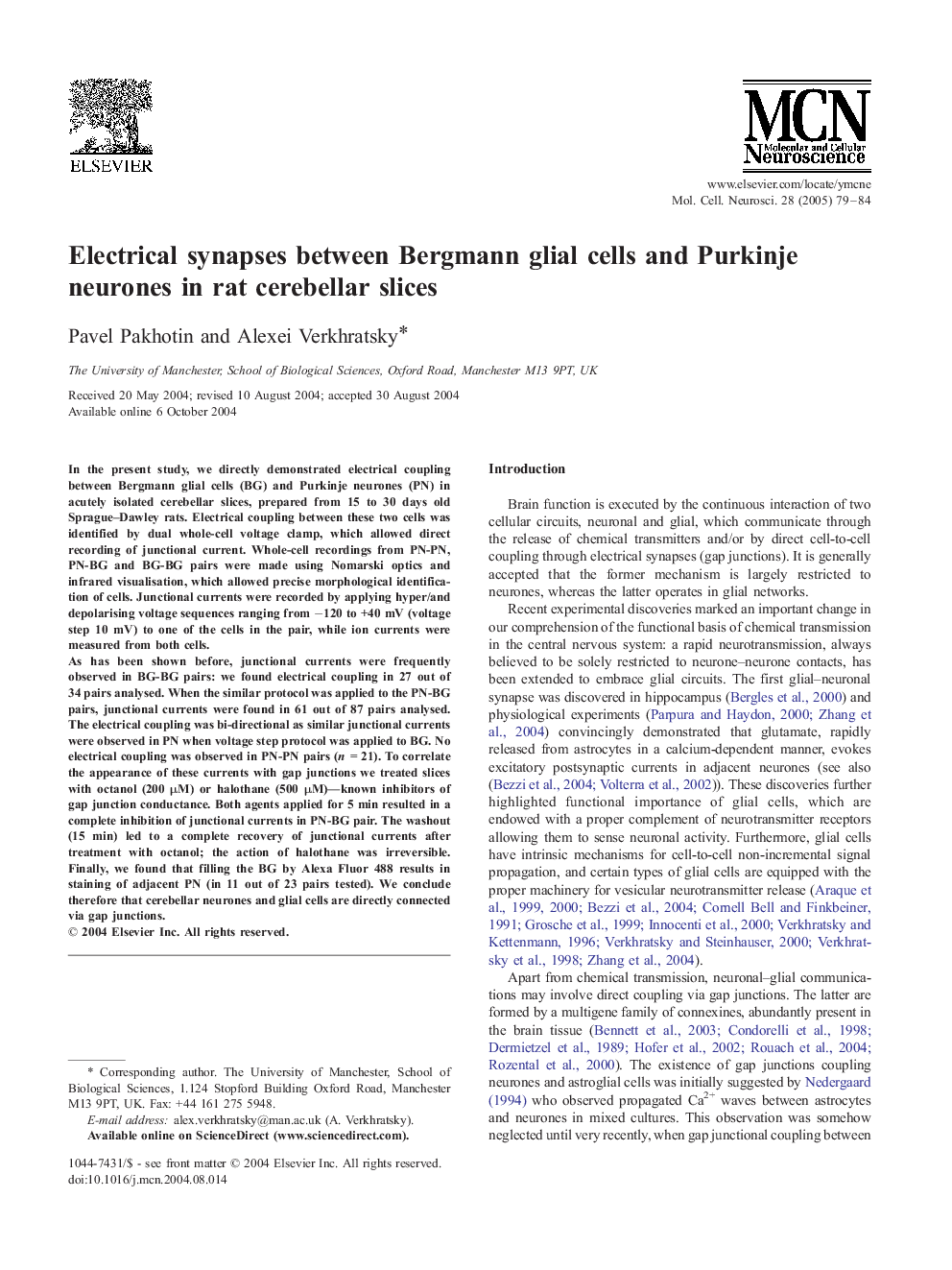| Article ID | Journal | Published Year | Pages | File Type |
|---|---|---|---|---|
| 10956929 | Molecular and Cellular Neuroscience | 2005 | 6 Pages |
Abstract
As has been shown before, junctional currents were frequently observed in BG-BG pairs: we found electrical coupling in 27 out of 34 pairs analysed. When the similar protocol was applied to the PN-BG pairs, junctional currents were found in 61 out of 87 pairs analysed. The electrical coupling was bi-directional as similar junctional currents were observed in PN when voltage step protocol was applied to BG. No electrical coupling was observed in PN-PN pairs (n = 21). To correlate the appearance of these currents with gap junctions we treated slices with octanol (200 μM) or halothane (500 μM)-known inhibitors of gap junction conductance. Both agents applied for 5 min resulted in a complete inhibition of junctional currents in PN-BG pair. The washout (15 min) led to a complete recovery of junctional currents after treatment with octanol; the action of halothane was irreversible. Finally, we found that filling the BG by Alexa Fluor 488 results in staining of adjacent PN (in 11 out of 23 pairs tested). We conclude therefore that cerebellar neurones and glial cells are directly connected via gap junctions.
Related Topics
Life Sciences
Biochemistry, Genetics and Molecular Biology
Cell Biology
Authors
Pavel Pakhotin, Alexei Verkhratsky,
